On a recent trip to Malta, I visited St John’s Co-Cathedral in Valletta with subdued expectations. I thought I’d pop in for a quick look at two Caravaggio paintings and be on my way. That assumption now feels completely naive, given I stayed until closing time and left in total awe.
I say naive for two reasons.
First, I assumed these Caravaggios would be tucked away in a quiet corner of just another Cathedral. But St John’s is not just another Cathedral. It is one of the most lavishly decorated buildings I have ever set foot in. We joked with the ticket attendant that we wouldn’t need the full 45 minutes before closing but could not have been more wrong. Every inch of this place is immaculately ornate, with intricate mouldings, elaborate sculptures, altarpieces, and gold crosses at every turn. Even the marble floor is a masterpiece, inlaid with coats of arms and designs.
Second, I was really only there to see The Beheading of St John the Baptist. That painting, housed in the Cathedral’s Oratory, was completed in 1608 after being commissioned by the Knights of St John as an altarpiece. It is the only known Caravaggio to bear the artist’s signature and is widely considered one of the most significant works of Western art. It even served as the inspiration for Malta’s national pavilion presentation, Diplomazija Astuta, at the 2022 Venice Biennale. So I had tunnel vision and knew nothing about the Cathedral’s second Caravaggio, St Jerome Writing. I certainly didn’t know the dramatic story behind it and ironically, this became the painting I found most fascinating.
Caravaggio arrived in Malta in the summer of 1607 as a celebrated painter but had also become a fugitive after a murder charge in Rome. Despite his past, the Knights of the Order of St John welcomed him and made him a knight. They commissioned two major works: The Beheading of Saint John the Baptist (1608) and St Jerome Writing (c. 1607—1608). However, his time in Malta unravelled after he was imprisoned for an unknown offence. He escaped, was defrocked by the Order, and fled the island, remaining on the run until his death in 1610.
Centuries later, in December 1984, Caravaggio’s St Jerome Writing was removed from its frame and stolen from the Oratory.
The theft sent shockwaves through Maltese society and sparked an international hunt for the missing masterpiece. The painting itself is a quiet, contemplative work showing the elderly Saint Jerome hunched over a desk, immersed in translating sacred texts. Painted around 1607—1608, during Caravaggio’s brief and storied stay in Malta, it is a masterclass in chiaroscuro (the dramatic interplay of light and shadow that defined his style). Emotionally powerful and technically brilliant, it stands as one of Malta’s artistic crown jewels.
The theft was not just a heist, it was seen as an attack on national heritage. Investigators believed the thieves were familiar with the Cathedral’s layout and had targeted the painting deliberately. Whispers of a ransom soon emerged, including cryptic phone calls from two men demanding €1.15 million for the painting’s return. Yet despite intense investigations, cross-border cooperation, and prolonged negotiations, the painting remained missing for years. Further investigations had led to the discovery that the ransom calls were being made from a factory and the painting had already been sent abroad after failed attempts to sell it in Europe.
Two years later, in 1986, St Jerome Writing was finally recovered from a private residence under mysterious circumstances. The details of its return were never fully disclosed, but rumours suggest covert deals and possibly a quiet ransom payment. The painting had suffered damage, likely from poor storage and mishandling during its disappearance, but it was still intact.
Expert conservators took on the delicate task of restoring the piece. Today, it once again hangs in the Oratory of St John’s Co-Cathedral, just around the corner from The Beheading of St John the Baptist.
For any visitor to Malta, standing amidst both works, surrounded by the grandeur of the Cathedral, is unforgettable. It is simply a must-see!
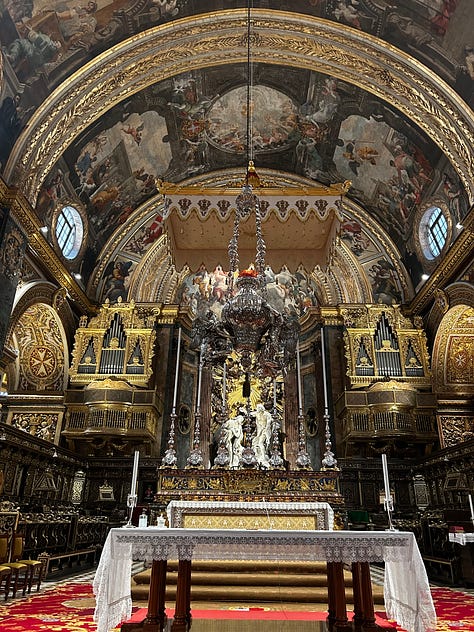
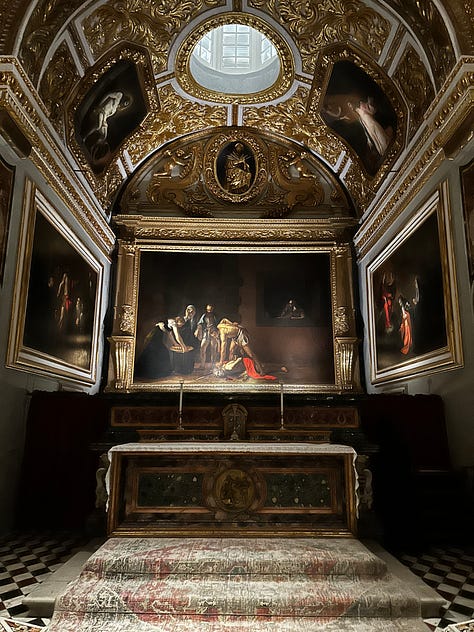
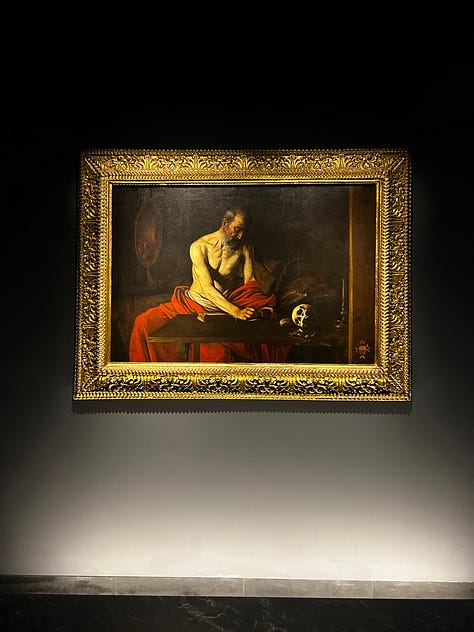

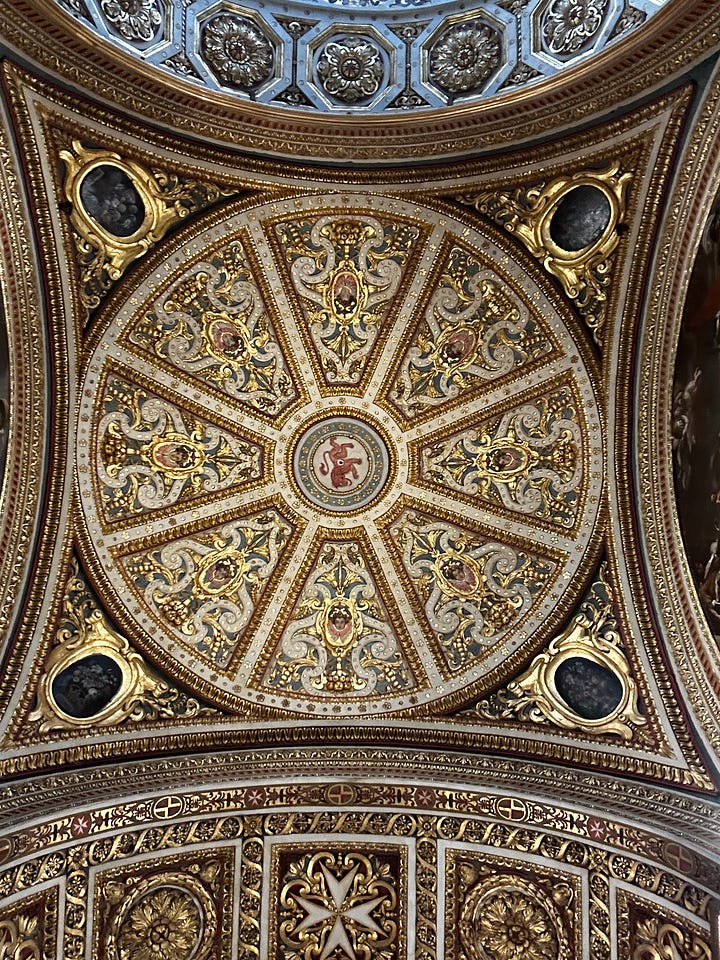

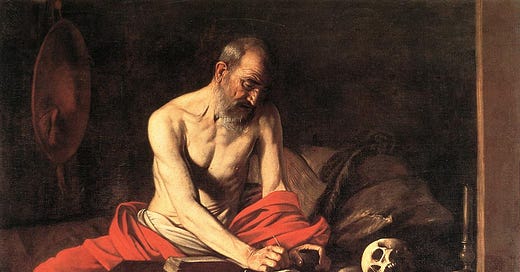




Thank you for the fascinating story and for the views of this spectacular Cathedral. What an unforgettable experience you had!